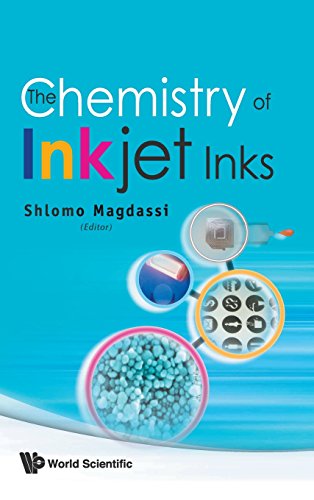The Chemistry of Inkjet Inks pdf free
Par castro elaine le vendredi, juillet 15 2016, 12:43 - Lien permanent
The Chemistry of Inkjet Inks by Magdassi S.


The Chemistry of Inkjet Inks Magdassi S. ebook
Format: pdf
ISBN: 9812818219, 9789812818218
Page: 339
Publisher: WS
(Phys.org) —A team of researchers working at China's University of Science and Technology has succeeded in developing a chemical mapping technique capable of revealing the constituent atoms of a single . In the case of plain printing paper, the lack of a chemical coating causes the paper to quickly saturate with ink. Abstract: Industry analyst firm NanoMarkets has just released a new report on the ink-related opportunities stemming from the growth of functional jetting: the manufacturing of products using industrial inkjet. Inkjet printing technology is the digitally controlled placement of small drops of liquid onto a surface, and it works just as well with dyes as inks. Instead of depositing chemical compounds on a substrate with a more expensive vapor phase deposition – wasting most of the material in the process – inkjet technology could be used to create precise patterning with very low waste. Dai Nippon Printing, Dow Corning, DuPont, Fujifilm Dimatix, Hewlett-Packard, Kovio, Methode, Microfab, Mitsubishi, Objet Geometries, Samsung, Sartomer, Source Technologies, Sun Chemical, Teijin, Seiko Epson, VTT, Xaar, Xennia, Xenon and Z Corporation. Inkjet printers use liquid ink dispersed by means of a fine jet (from which comes Ink-Jet) to spread the ink evenly and accurately. (Phys.org) —Using an ink containing tiny graphene flakes, scientists have inkjet-printed graphene patterns that can be used for printing finely detailed, highly conductive electrodes. This ingredient can make up to 40-60% of some inkjet inks and is the secret ingredient that prevents the ink from evaporating into the air. HP invest an incredible amount of resources to their print technology, with advances in print head and ink technology heavily patented and protected. Also goes by the name (Chemists call it) N-Pyrol. �Some of the materials we In the new findings, researchers were able to create an ink that could print chalcopyrite onto substrates with an inkjet approach, with a power conversion efficiency of about 5 percent.